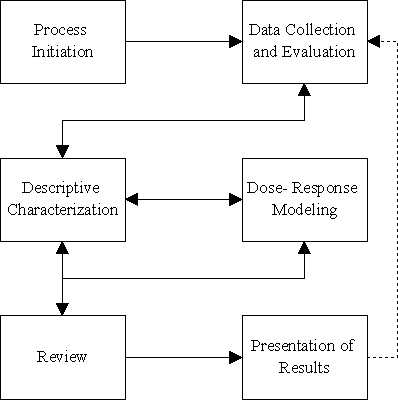Hazard characterizations can be conducted as stand-alone processes or as component of risk assessment. A hazard characterization for a particular pathogen may serve as a common module or building block for risk assessments conducted for a variety of purposes and in an assortment of commodities. A hazard characterization developed in one country may serve the needs of risk managers in another country when combined with an exposure assessment specific to that country. A hazard characterization developed for water exposure may be adapted to a food exposure scenario by taking into consideration the food matrix effects. In general, hazard characterizations are fairly adaptable between risk assessments for the same pathogen. At the same time, exposure assessments are highly specific to the production, processing and consumption patterns within a country or region.
Hazard characterization, either as part of a risk assessment or as a stand-alone process, is iterative. Frequently the lessons learned lead to refinement of the initial question (or problem statement), leading in turn to further analysis. These guidelines for the characterization of hazards in food and water follow a structured, six-step approach, as outlined in Figure 2 and described in detail in subsequent chapters.
Figure 2. Process flow diagram for hazard characterization of pathogens

Risk assessment and hazard characterization for microbial hazards should provide risk managers with a "best estimate" of the risk and the dose-response relationship, as free from bias as possible. Worst-case scenarios and deliberately conservative estimates reduce the utility of the risk estimate for cost-benefit or cost-effectiveness studies and decrease our ability to describe the uncertainty of the risk estimates. Uncertainty and variability should be tracked through the model to the extent possible, and included in the final estimate.
Independence and separation of hazard characterization from risk management are essential principles. Nevertheless, interaction between managers and assessors is also necessary to ensure the utility of the product to policy-makers and to ensure that the risk managers understand the principles and assumptions underlying the hazard characterization.
Transparency in hazard characterization requires full documentation of the process, including sources of data and their evaluation, and any assumptions made.